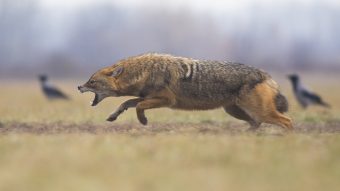
The project “EU for Natura 2000 in Serbia” organized in collaboration with the Energy Portal a photo contest “Natura 2000 in the frame” from September 14th to November 27th 2020.
Out of more than 1,500 received photographs, 3 winning and 31 best semi-finalist photographs were selected, and will be displayed at an outdoor photo exhibition at Kalemegdan Fortress from March to April 2021.
The aim of this exhibition is to show through these amazing photographs the important biodiversity values and beautiful landscapes in Serbia, as well as raise public awareness of the importance of nature conservation, diversity of flora and fauna, and benefits of the Natura 2000 network for Serbia.
The opening of the photo exhibition will take place on 5th of March 2020 at Kalemegdan Fortress, starting at 11:00h. This event is taking place the same week of the celebration of the World Wildlife Day (3rd March).
The Natura 2000 network is a crucial instrument for biodiversity protection in the European Union, an ecological network of protected areas established to secure the survival of the most valuable species and habitats, ensuring that European nature systems stay healthy and resilient. It is based on the Birds and Habitats Directives, and covers over 27,800 natural sites of high ecological value all over Europe. With a total surface of nearly one million square kilometres, it is the largest network of conservation areas in the world.
The European Union is supporting the Ministry of Environmental Protection in establishment of the Natura 2000 network in the Republic of Serbia through an IPA-funded project “EU for Natura 2000 in Serbia”. The project includes several activities, with a focus on research and monitoring the most important species and habitats. Serbia is very rich in terms of biodiversity, with around 43 percent of the European species present in the country. According to the literature data, the territory is characterized by fantastic genetic, species and ecosystem diversity, although species diversity is in the process of being fully researched and documented. Approximately 44,200 species and subspecies have been registered so far, and the total number of taxa is estimated at about 60,000.
Source: Natura 2000



